|
|
Period:
Second World War
Region:
Norway
The Nazi camp Beisfjord in Norland 1942
The Beisfjord Camp named after the village in Narvik municipality, Norway, was one of the Nazi concentration camps established on the territory of the Kingdom of Norway during Second World War. The camp of Beisfjord is 3,300 km far from Belgrade.
From 1942-1945, Norway witnessed the coercive deportation of 4,000 Serbs from the territory of Yugoslavia aged between 16 and 60 who were supposed to serve as labor for the construction of roads on behalf of Nazi Germany interests. Detainees were located in 24 camps. Serbian detainees faced severe conditions in this camp, and what’s more, Nazi guards committed massacres of many of them.
The first group of detainees arrived in the camp on 24th June 1942, and the camp was closed on 24th October 1945. It operated for 120 days.
Some sources suggest that there was a list of 750 Serbs that had been killed in four months of the camp’s operation. Around 150 Serbs returned to the fatherland in 1945.
A few notorious guardians and managers of the camp were tried in 1945 before the Military Court in Belgrade which sentenced them to death, but also before the Civil Court in Norway which issued lighter punishments.
In the 1950s, the Norwegian Government founded the War Memorial Museum in the town of Narvik, with two exhibitions- one depicting camps, and another depicting the fight of Norweigan patriots against Wehrmacht. The tragedy of the two nations- Serbian and Norwegian- incited survivors from both sides to create the Society of Friendship after the War, which had headquarters in the city of Niš and Narvik.
Besides the Beisfjord camp, there was another camp operating in the municipality of Narvik, the Nazi camp of Øvre Jernvann, while the whole territory of Norway contained 40 camps, in total. The Beisfjord camp was considered to be one of the cruelest in the northern part of Europe.
BACKGROUND
The Kingdom of Serbs, Croats, and Slovenians, the first South Slavic state, later renamed into the Kingdom of Yugoslavia, was created after the First World War, with its promulgation on December 1, 1918, in Belgrade. The territory of the Yugoslav Kingdom was divided into banates in 1929 and the structure of its government was a parliamentary monarchy.

Proclamation of the first South Slavic state
The royal title was held by the Serbian Karadjordjević dynasty. It consisted of Southern Serbia, Šumadija, Raška, Kosovo and Metohija, Eastern Serbia, Montenegro, Bosnia and Herzegovina, Vojvodina, Slavonija, a small part of Dalmatia, the Dubrovnik Republic, Lika, Kordun, Banija, Zagorje, Gorski Kotar, and Slovenia.
After the assassination of King Alexander I Karadjordjević in Marseilles on October 9, 1934, the country was ruled by regents: Prince Paul Karadjordjević, Dr. Radenko Stanković, and Dr. Ivo Perović, and the government was formed by Dragiša Cvetković and Vlatko Maček.

Belgrade's demonstration on March, 1941.
In the mid-1930s, Europe witnessed the rise of Nazism and Fascism, especially in Germany, Italy, and Spain. This led to the formation of the Tripartite Pact, on September 27, 1940, between Germany, Italy, and Japan. In the next months, this alliance was joined by the following countries: Hungary, Bulgaria, Romania, Albania, etc. Thus, the Kingdom of Yugoslavia found itself surrounded by Axis Powers.
In Vienna, on March 25, 1941, the signing of the protocol between the Kingdom of Yugoslavia and Nazi Germany took place regarding the passage of German and Italian troops through Yugoslav territory. Among the patriotic forces of the Kingdom of Yugoslavia, this was interpreted as treason, and the British and Soviet intelligence officers organized a military coup and demonstrations on March 27, 1941 in Belgrade resulting in the overthrow of the governorship led by Prince Paul and putting on the throne a minor king Petar II Karadjordjević.
Hitler changed the plans and the armed forces' plans to attack Greece, were diverted to the Kingdom of Yugoslavia.
[[ENprethodnicaYU41a]]
Situation in Narvik
Narvik is the third most populated municipality and harbor in the Nordland county of the Kingdom of Norway. It is 1, 400 km far from the capital of Oslo to the north. On the east, it faces mountains, and on the west- Norwegian sea.
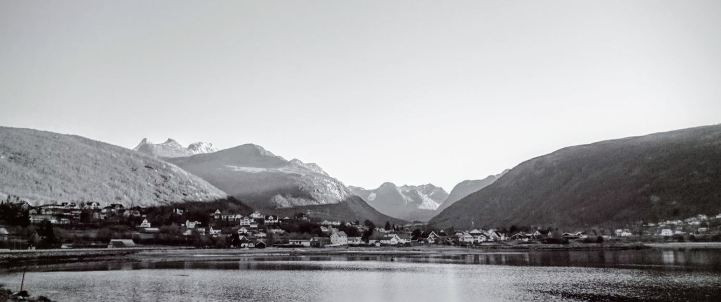
The climate is continental with the impact of Arctic, Atlantic winds, and the Gulf Stream.
Narvik developed as a port for ships transporting iron mines at the end of the 19th century. In 1902 the village of Narvik received the status of a town.
According to the census, Narvik had a population of 5,000 people before World War 2.
THE CAMP ESTABLISHMENT
Nazi SS units occupied Norway in April of 1940 within just seven days due to weak resistance. The only exception was the northern region near Narvik where fights lasted for two months. Immediately upon occupation, the puppet government was set up, headed by Vidkun Quisling (Vidkun Abraham Lauritz Jonssøn Quisling, 1887-1945). His party immediately started to persecute patriots who refused to obey Hitler’s ideology.
Soon after, Germans commenced with establishing concentration camps throughout the entire Norway where they would bring healthy and strong men to perform hard works on dangerous terrains, such as the construction of roads, railways, etc.
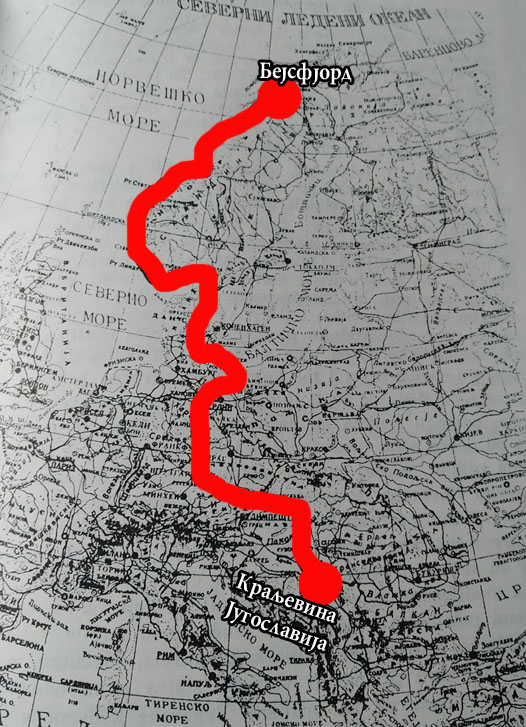
A journey into the unknown: 2,100 miles from fatherland to Northland
The reason they needed these roads was that Hitler feared the potential attack of the Red Army via the territory of Finland, and these parts of Norway didn’t have roads to transport men, arms, and equipment.
Detainees who were brought to these regions were men from Yugoslavia, Poland, England, France, Italy, Czech, SSSR...More than 80,000 people were detained in these camps, and 4,000 Serbs among them.
The first group of detainees arrived in the port of Narvik on 24 June 1942 who set off from the city of Zemun (Serbia) on specially protected trains. The train transported men who had previously been detainees of the camps of Banjica, Jasenovac, Barake na Savi, Crveni Krst, etc. In Denmark, they were transferred into the ship “Kerkplein” which sailed along the Norwegian coasts to Narvik. The operation was secret with the code name “Viking”. Upon coming into the port, prisoners were immediately taken to the village of Beisfjord, 8 km to the south, where the wooden barracks had been built. This is when the camp began to operate.
Besides these 1,125 prisoners, the overall plan included transportation of an additional 800 Serbs who were detainees of the camps in Bavaria and Austria, but the spread of typhus in those camps popped out as an obstruction. A smaller group of 224 failed even to reach Narvik but was transferred to the camp Osen.
Serbian detainees were also taken to other camps in Norway, besides the one in Beisfjord, such as Korgen and Botn.
OPERATION OF THE CAMP
The camp of Beisfjord was officially called “Concentration Camp 1 Narvik - Beisfjord”.
The camp was built on a hill with a plain, near the river. To the south and north, it was surrounded by forest and downhills. It was designed for 2,000 detainees, according to German standards, with a three-meter high barbed wire fence. The camp was partitioned with wire after the second group from Austria had failed to arrive. The second part of the camp was organized for Norweigen guardians - the hird (hirden).
Detainees were placed into seven barracks with beds. The three barracks were made to be kitchen, workshop, and bathroom. The last one was intended to be a warehouse. Detainees had three outside toilets at disposal.
The camp included seven tall guard towers, each containing a machine gun and two reflectors. Opposite of the camp, the barracks were built for German command and office.
On the entrance to the camp, the inscription on German "Mit fleissige Arbeit - Weg in Freiheit" cynically welcomed detainees- “With hard work take the way to freedom.”
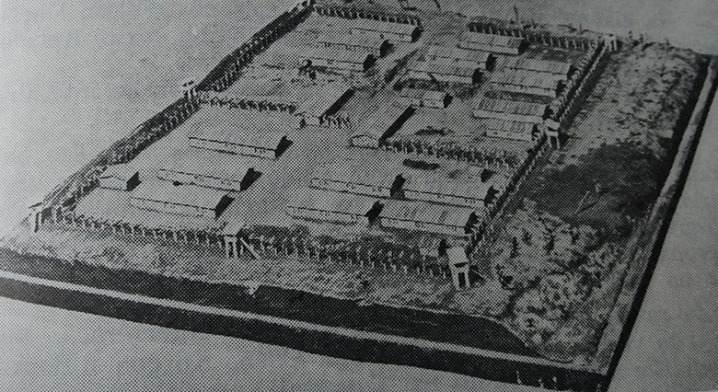
Organization of the command
The camp director was Goecke, SS-Obersturmbannführer, the number 22, 529 (which means that he had a long career in Hitler’s army). His first deputy was SS-Obersturmführer Franc De Martin, and later, SS-Obersturmführer Otto Seifert. Since Goecke didn’t live in these barracks, the latter were in charge of the situation in the barracks.
Other German officers and non-commissioned officers were:
-
SS-Obersturmführer- FRANKEN, work supervisor
-
Hauptsturmführer- PLUSKOTA, work supervisor
-
Untersturmführer- HERTZER
-
Untersturmführer- KAPPUS
-
Untersturmführer- KRANZ
-
Untersturmführer- HAGER
-
Untersturmführer- AHLGRIMM
|
-
Untersturmführer- JANASIK
-
Untersturmführer- DWELK
-
Sturmscharführer- MATTHÄUS, lagerfuhrer
-
Oberscharführer- SARFERT
-
Unterscharführer- OTTO
-
Rottenführer- BECKMANN
-
Rottenführer- FELTE
-
Rottenführer- BOTT
|
Photo: A copy of the report containing the names of the camp’s command of Beisfjord from the day of the camp’s closure.
In addition, the camp held 40 German soldiers and guardians, and 40 guardians from the hird.
The camp command had direct communication with the headquarters of the Reich Commissariat for the Occupied Norwegian Territories in Oslo, headed by Josef Terboven (Josef Antonius Heinrich Terboven 23 May 1898 – 8 May 1945), a Nazi leader very close to Hitler. His lieutenant general was SS general Wilhelm Rediess (10 October 1900 – 8 May 1945).
Hardship
The motive behind bringing Serbs and other prisoners to these camps was the construction of the roads and railways to Sweden (officially neutral state) to facilitate transportation of mines - iron, nickel, and lead which were supposed to support the German war industry.
Another reason was to facilitate the transportation of men, arms, and equipment in case of an SSSR attack.
They took detainees across Bjornfjell mountain which was followed by their shootings and burning in massive graves. For this reason, the place was called the hill of death.
Medical care and hygiene
Proper medical care didn’t exist. Detainees could bath once a week in barrels.
Shootings
Detainees in Beisfjord camp were subjected to shooting on an almost daily basis. It is estimated that around 750 Serbs- detainees were killed in 120 days, which means that on average more than 6 detainees were killed daily. The death toll in this camp was above 83% which makes it one of the most brutal camps in Norway, and entire Europe, as well.
Detainees were often beaten with butts, whips, wires, or some blunt tools, but they were also shot with guns, and pistols during escape attempts.
This horror also included mass shootings. On 13 July 1945, northern parts of Norway on 13 July 1942 were visited by Josef Terboven, the Reichkomissiar of Norway. On this occasion, he visited the Beijsfjord camp as well. There, he brought a decision to liquidate all 287 inmates who were lying in the barracks for sick. Nobody, except the camp command, knew about this decision.
Shootings were carried out from 17 to 19 July 1942. The inmates were taken out in groups of 20. A larger group of 70 detainees in sick barracks refused to leave and put barricades when the command made a new decision to burn these barracks. German officer Franc De Martin monitored the whole operation from the tower. The smoke from the ruins was rising for two days.
The written document doesn’t exist because the order on mass liquidation was conveyed in an oral form on the spot. Other detainees were ordered to dig pits to bury the victims.
VICTIMS
Thousands of Serbian men aged 16 to 60 were transported from the occupied Kingdom of Yugoslavia to occupied Norway. They had different occupations- farmers, artisans, teachers, drivers, railroaders, lumberjacks, lawyers, salesmen, etc.
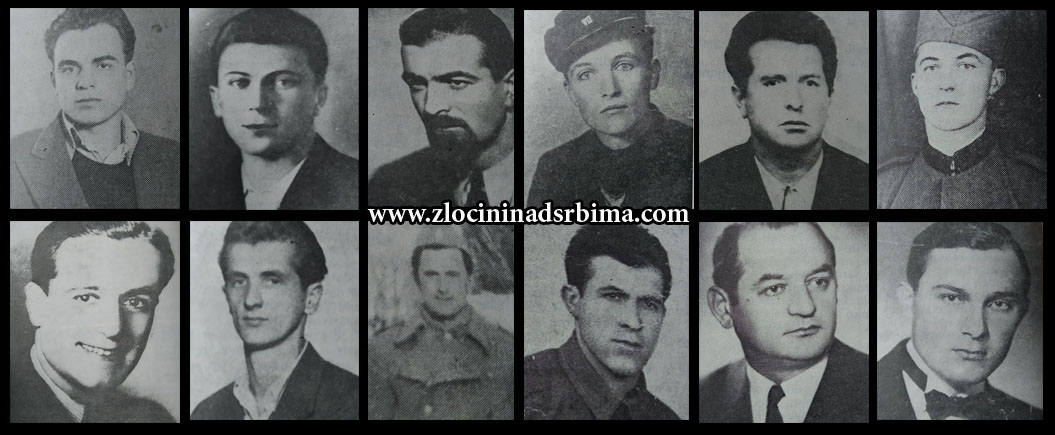
They came from all parts of Serbian lands- Bosnia, the regions of Banija, Kordun, Slavonija (today’s Croatia), Vojvodina (Northern Serbia), Šumadija (Central Serbia); Lika, Herzegovina, Western Serbia, Montenegro, the regions of Dragačevo and Vlasina (south Serbia).
The most of detainees came from the cities of Sarajevo, Kikinda, Belgrade, Niš, Gornji Milanovac, Sjeničak, Novska, Bijeljina, Rogatica, Melenci, Sokolac, Zagreb…
A partial list containing 900 names can be found on the special page of the website of whom 750 were killed within 120 days of the camp's operation.
Since Serbs from the region of Kordun outnumbered all others, they used to sing verses of the song more than 100 years old, where Kordun was mentioned. One of the prisoners changed the verses.
TESTIMONIES
A housewife from Norway Greta Dal, an antifascist and inclined to Serbian prisoners, wrote a personal diary with hundreds of pages full of records. She was watching from her window what was happening. Under the date - Monday, 6 July 1942, she wrote:
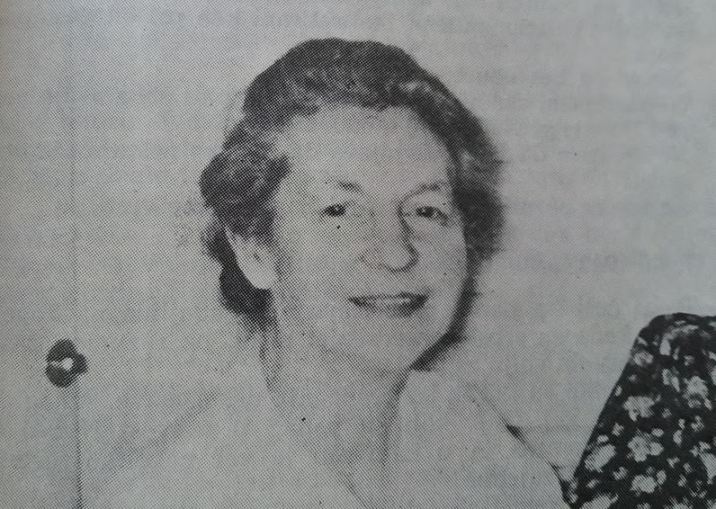
- "Another news has reached us. 1,000 of Serbs and Greeks were deported to Fagernes. These political prisoners were forced to walk to Beisfjord. They were brought on ship. The same day upon their arrival, 5 detainees were buried. But we don't know how many of them Germans threw out into the sea. Sick, miserable, with little clothes on themselves they walked in agony along the long way. Gestapo members tortured them as if they were dogs.
It is hard for me to understand why someone needs to suffer this much for the love for his fatherland. It seems the dawn will never rise, only sad news is what we hear...".
Another testimony gave Petko Forcan from the town of Rogatica:
- “When I was detained in the camp Sajmište (Belgrade) I befriended two brothers Milosav and Vidoje Vajović from the village of Rogu near the town of Užička Požega. They were farmers. We shared everything we had.
When we came to Narvik, Vidoje was exhausted, so Milosav and I carried him. A German SS soldier saw this and started to hit him, but the two of us tried to shield him with our backs. This made the soldier furious, so he began to hit harder. It is then when Milosav took his stick and said to German to stop hitting him because Vidoje was weak and that he wasn’t a dog.
Looking for someone to interpret the words, the soldier found Alija Lelić, a prewar criminal, who interpreted Milosav's words badly and added something he didn’t say. The soldier picked a pistol and shot Vidoje. He killed a man in front of his brother. After two months, the Germans shot Milosav, too...".
Tomo Vrabec from Zagreb described the deadly game called Bjornfjell cross often played by the guards:
- “The game was that they placed us towards the exit to run on the muddy road which made running difficult. Commander announced the start with a whistle. If someone fell from exhaustion, the guards came and bit him fiercely. Everyone had to run 6 circles. What we were most scared of was this game, and they enjoyed it.
THE GREAT MISSION
Outside the municipality of Narvik, nobody knew what was happening in the Beisfjord camp, including the torturing and killing of detainees.
By the end of August 1942, a teacher and Norwegian patriot Osmund Rerslet from Narvik managed to flee to Sweden. For many days, he had spent hours in bars with German officers collecting information while they were drunk.
He came to the reception center near Stockholm and told everything he saw what was happening in the camp and in Bjornfjell (mountain separating Norway and Sweden, with the highest peak of 760 m altitude). When a diplomat from Norway who was at that moment in Stockholm heard this information, he soon sent the news to his exiled government in London. Rerslet tried to tell everything he knew to Sweden journalists as well, but they were unwilling to publish the story about it.
The truth is that Sweden, although neutral, put all efforts to avoid the possibility of breaking the agreement with Hitler which, otherwise, would result in war, and occupation. But, Rerslet was persistent to reveal the truth about the massacre in Beisfjord which finally came to the world’s attention. At the end of 1944, he got a position in the Information Service Department of the Norwegian Government in London.
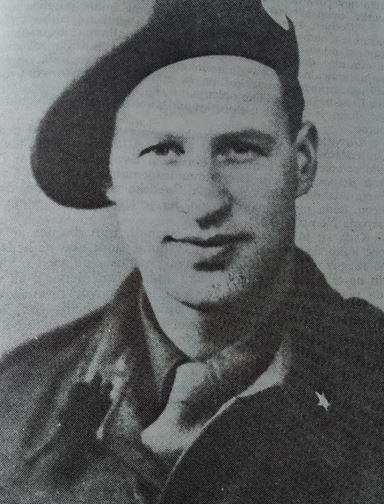 |
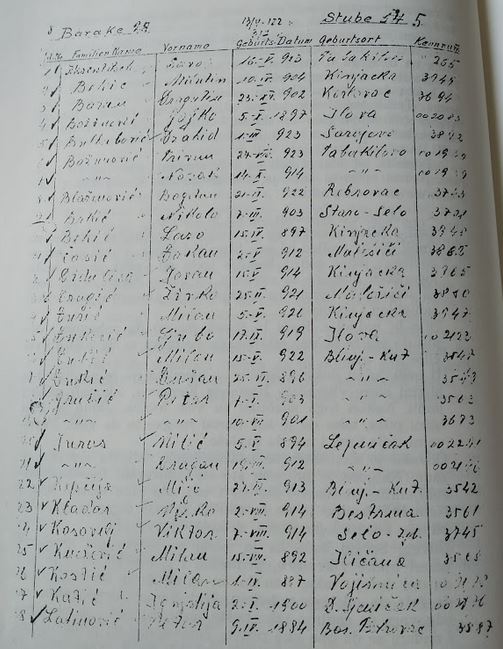 |
|
Truth hero: Osmund Rarslet |
Orginal list of prisoners from July 10th 1942 |
THE CAMP CLOSURE
The Beisfjord camp was closed on 24 October 1942, by the order of SS command in Oslo.
The order was made upon the realization that the number of detainees is insufficient to manage such a big camp in the upcoming winter. The remaining detainees were transported to other camps.
SCHOLARLY MENTIONS
A professor from the University of Norway Nils Christie made an extensive historical and sociological study entitled “Guards in concentration camps” where the Beisfjord camp was mentioned:
- "In general, what we have learned from studying the camps in Norway where Serbs were brought, involves high percent of casualties due to hard and cruel life in them. These camps are one of the most brutal established during World War 2. The testimonies of witnesses prove this fact.”
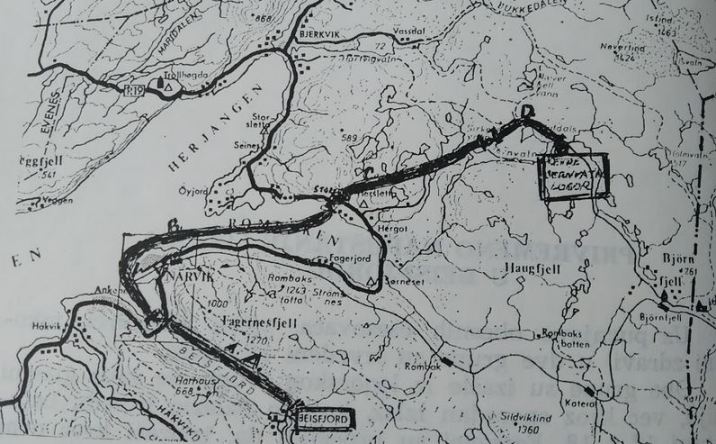
Map of the camp inmates across the Bjernfjel mountain to the Orve Jarnvan camp
Magne Skodvin, a Norwegian educator and historian made the following remark:
- "That the price which Serbs had to pay for their rebellion against Nazis was high, became clear to Norwegians when they witnessed the arrival and suffering of the Serbs- detainees in Norway. Compared to Serbian atrocities, the Norwegian victims had a smaller percent. From the perspective of human tragedy, their sufferings cannot be grasped because they go beyond imaginable.
The Nazi camps in Norway were undoubtedly aimed at the extermination of the Serbs, through systematic execution of the detainees. The detainees were tortured by famine, brutality, hard work that destroyed their health, and execution when they became weak and incapable of work".
TRIAL AND VERDICTS
In the period 1946-1947, the Military Court in Belgrade issued verdicts to the members of the camp command in Beisfjord:
-
Otto Seifert, SS-Obersturmführer, born in Zwickau (Saxony, Germany). Occupation- teacher. The first camp officer in Beisfjord and Bjornfjell. Sentenced to death by hanging by the Military Court in Belgrade on 31st October 1947.
-
Karl Matheus, SS-Sturmscharführer, born in Citau (Saxony, Germany). Occupation- blacksmith. Married. Father of two children. Named by detainees as “Snake”. The Lagerführer of the Beisfjord Camp.
-
Johan Anninger, SS-Untersturmführer, born on 6th September 1894 in Amberg (Bavaria). Occupation- public officer. Married. Father of two children. Nickname “Russian”. Sentenced by the Military Court in Belgrade to death by shooting on 23rd October 1946.
-
Maks Gemeinhard, SS-Oberscharführer, born on 5th October 1889 in Chemnitz (Saxony, Germany). Occupation- Resort supervisor. Married. The Father of two children. The work supervisor of the camp. Sentenced by the Military Court in Belgrade to death by shooting on 23rd October 1946.
-
Fritz Lehman, SS-Untersturmführer, born on 16th October 1892 in Hornberg (Baden, Germany). Occupation- Machinist. Nickname “Blond”. The work supervisor of the camp. Sentenced by the Military Court in Belgrade to death by shooting on 23rd October 1946.
-
Wilibard Kranz, SS-Untersturmführer, born on 16th October 1904 in Ludwigshafen (Germany). Occupation- public officer. Married. The nickname “Zigeuner”. The chief of all working groups. Sentenced by the Military Court in Belgrade to death by shooting on 23rd October 1946.
-
Friedrich Kapus, untersturmführer, born on 28th December 1888 in Lar Diglingen (Baden, Germany). Occupation- public officer. Married. The father of three children. Sentenced by the Military Court in Belgrade to death by shooting on 23rd October 1946.
-
Richard Hager, SS-Untersturmführer, born on 20th August 1980. Occupation- salesman. Married. The father of two children. The guard supervisor in the camp. Sentenced by the Military Court in Belgrade to death by shooting on 23rd October 1946.
-
Friedrich Dwelk, SS-Untersturmführer, born on 19th February 1891 in Tverkeiten, Königsberg. Occupation- Carpenter. Married. The father of three children. The supervisor of detainees and supply in the camp.
-
Kurt Bretschneider, SS-Untersturmführer, born on 2nd April 1897. Occupation- locksmith. Married. The chief of one shift at the camp. Sentenced by the Military Court in Belgrade to death by shooting on 23rd October 1946.
-
Vili Sarfeert, SS-Oberscharführer, born on 21st June 1888 in Burgstädt (Saxony, Germany). Occupation- Road supervisor. Married. The father of two children. The store supervisor and chief of artisans in the camp. Sentenced by the Military Court in Belgrade to death by shooting on 23rd October 1946.
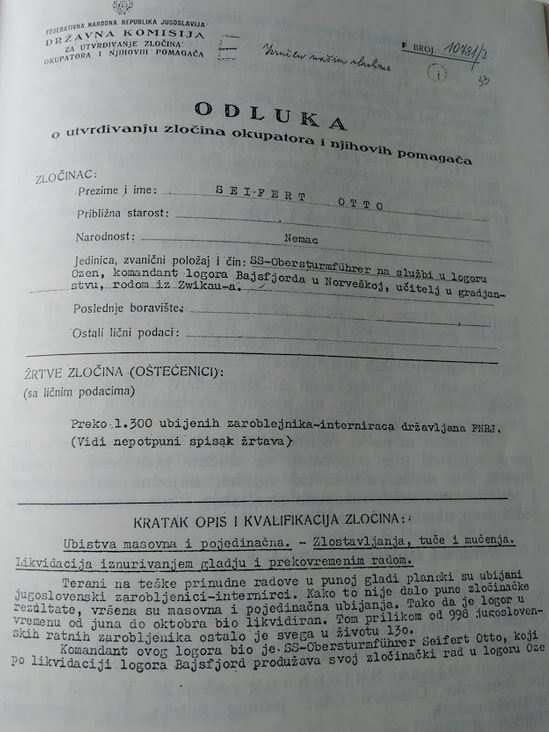
Document of the State Commission for Determining the Crimes of the Occupiers
There were another two German officers of the Beisfjord camp that manage to escape prosecution:
-
Franc De Martin- the camp first officer, the commander of the shooting of 287 wounded and sick detainees. Later, transferred as a commander to the concentration camp of Karasjok where the Yugoslavian detainees were held.
-
-
Goecke- SS-Obersturmbannführer, and the Beisfjord camp director. Nobody requested his extradition because the detainees hardly remembered him.
All of these German officers escaped sentences although there was clear evidence that they conducted executions and beatings.
In the period 1948-1949, the Court in Norway issued a sentence to Norwegian legionnaires, so-called the Hirds, who were pro-Nazi oriented and served Nazis.
-
Gunar Gasmo, born on 29th November 1924 in Valer and Solr. Marital status: Single. Occupation: blue-collar. Sentenced to 10 years of hard labor by the Court in Norway on 25th June 1948, and 10 years of the loss of honor.
-
Asbjørn Skjønhaug, born on 26th May 1923 in Nedre Romerike. Marital status: married. The father of one child. Occupation: carpenter. Sentenced to 6 years and 6 months of hard labor and 10 years of the loss of honor by the Court in Norway on 15th November 1948.
-
Bjarne Andreas Persen, born on 25th May 1923 in Baerum. Occupation: Assistant in Book Cover Store. Marital status: Married; one child. Sentenced to three years and three months of hard labor and 10 years of the loss of honor by the Court in Norway on 22nd August 1949.
-
Rolf Walther Gyring, born on 2nd June 1900, in Fredrikstad. Occupation: sailor and driver. Marital status: Married. Two children. Sentenced to nine years of hard labor and 10 years of the loss of honor by the Court in Norway on 16th August 1948.
-
Knut Heyvik, born on 13th March, 1920 in Stavanger. Occupation: sailor. Sentenced to four years of hard labor and 10 years of the loss of honor by the Court in Norway on 16th August 1948.
-
Alex Fritjof Johan Anderson, born on 2nd September 1909 in Hamburg. Occupation: mechanic. Marital status: married. Father of one child. Sentenced to nine years and six months of hard labor and 10 years of the loss of honor by the Court in Norway.
-
Anre Edvard Skrepstad, born on 11th November 1922 in Oslo. He was a student in grammar school. Sentenced to four years of hard labor and 10 years of the loss of honor by the Court in Norway on 16th August 1948.
-
Josef Anker Johansen, born on 16th September 1903, in Oslo. Occupation: sailor. Married. No children. Sentenced to nine years of hard labor and 10 years of the loss of honor by the Court in Norway on 16th August 1948.
-
Per Evald Braa, born on 13trd December 1922 in Dvaerberg. No occupation. Single. Sentenced to eight years of hard labor and 10 years of the loss of honor by the Court in Norway on 16th August 1948.
Other Norwegian legionnaires were not found guilty.
There were dozen of camp guardians who were from the territory of occupied Yugoslavia:
-
Alija- Ale Lelić, a hairdresser from Bosanska Gradiška. The main chef of the camp police. Killed by the members of Verchmacht on 26th April 1943 in the camp Osen in Northern Norway while he attempted to escape since he couldn’t perform his duty anymore.
-
Mirko Jadrić, a locksmith from the village of Kroj near the place of Sinj. A pre-war criminal. The camp’s cook and guardian. Killed on 26th April 1943 in the camp Osen by German soldiers while attempted to escape.
-
Štef Telišman, a butcher from the city of Zagreb. A pre-war box player and thief. The camp’s supervisor of sickrooms and guardian. Killed on 27th October 1943 in the Korgen camp while allegedly trying to escape.
-
Pašaga Kurjaković, a workman from the town of Bihać. A pre-war criminal. The guardian in the Beisfjord camp. The court made of internees sentenced him to death on 8 May 1945.
-
Ibro Halilović, a butcher from the town of Doboj. A pre-war criminal. The camp’s guardian. The court made of internees sentenced him to death on 8th May 1945.
-
Danilo Tomić, a salesman from the city of Sarajevo. The camp’s guardian. The court made of internees sentenced him to death on 8th May 1945.
-
Šefkija Sirčo, a lab technician from the place Visoko. A medic in the camp. The court made of internees sentenced him to death on 8th May 1945.
-
Franjo Fuks, a worker from Zenica. He helped criminals to kill sick in hospitals. The court made of internees sentenced him to death on 8th May 1945.
-
Dijab Rifat, without occupation and a pre-war criminal. Born in the town of Bosanski Ključ. The camp’s guardian. The court made of internees from Øsand sentenced him to death on 8th May 1945.
-
Marko Šobot, without occupation and a pre-war criminal. Born in the region of Slavonija, lived in the city of Sarajevo. The camp’s guardian. The court made of internees sentenced him to death on 9th June 1945 in the place of Persaunet, Trondheim, while attempting to escape.
YEARS LATER…
After World War 2, the establishment of bilateral relations between Yugoslavia and Norway was followed by founding the Society of Friendship, first in Narvik (Norway) and then in Niš (Serbia) 1969. This was the beginning of mutual visits of the members of society from both countries.
In Beisfjord itself, the monument dedicated to the victims was erected with the inscriptions in both Norwegian and Serbian Cyrillics:
“THIS MONUMENT OF GRATITUDE OF NORWEGIAN AND YUGOSLAVIEN PEOPLES ERECTED IN 1949 IN THE MEMORY OF MORE THAN 500 YUGOSLAVIANS, THE NAZI VICTIMS, WHO GAVE THEIR LIVES IN GERMAN CAMP IN BEISFJORD 1942-1943, FOR THE LOYALTY TO THEIR FATHERLAND AND FREEDOM.”
It was not before 1975 that the monument was erected in the city center of Kikinda in the memory of 46 internees arrested and taken to Norway of whom only 7 returned to their homes. Narvik and Kikinda have become brotherly cities. Kikinda also has a hotel named Narvik.
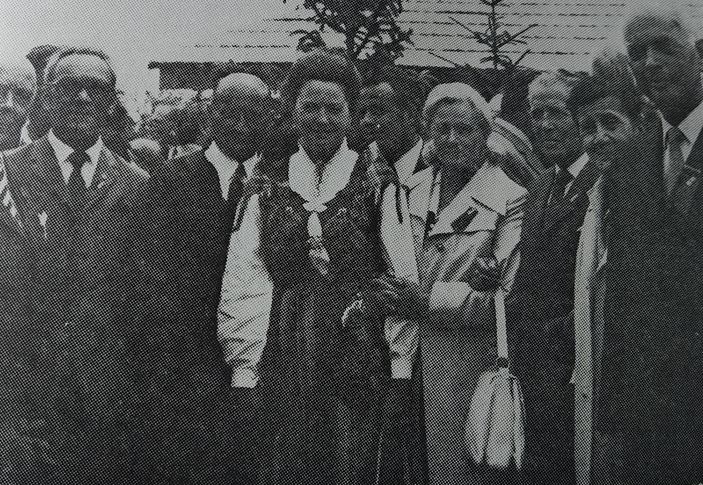
At one of the gatherings of the Society in the city of Gornji Milanovac in the early 1980s.
In the 1980s, at the periphery of Gornji Milanovac, a Norwegian house was opened. It is the restaurant designed by an architect Aleksandar Đokić and made from the contributions of the surviving internees, but also of Norwegians who had helped internees.
A group of young people from Germany visited Narvik in 1986 and the memorial museum. They asked the manager of the museum why they represented war photos after so many years, that they didn’t want to bear a burden of their fathers and their deeds, and that it encouraged hate towards German people.”
The manager Nils Rang calmly answered:
“The purpose of this exhibition is not to encourage hate, that is out of the question. You and other German citizens are very much welcome to come as tourists and guests, but not as soldiers! Everything that happened four decades ago should serve to teach and warn you. So that those things never happen to any other nation.”
PUBLICATIONS
There are several books about Nazi camps in Norway where, among others, Serbs from occupied Yugoslavia were imprisoned.
-
Slavko Vukić from Kikinda, a surviving internee wrote a book called “Memories from Norway” which is full of details and dramatic scenes of interment, depicting the suffering of his compatriots in Scandinavian lands.
-
-
Ljubo Mlađenovic, a journalist of “Politika”, published a book in 1988 under the title “The Tragedy of Beisfjord” which is a mix of documentary articles and testimonies of the surviving detainees in the form of a novel. A bunch of photographs brought this book to perfection.
-
-
A feature-length documentary starring Yugoslavian and Norwegian actors was made in 1955, under the title “Bloody way” (srb. “Krvavi put”, nor. “Blodveien).
-
-
The play directed by Dejan Janković based on the book of the same name written by Knut. F. Thoresen was premiered on 9 February 2018 in Cultural Institution “Vuk Karadžić” in Belgrade.
-
-
TV “Hram” made a short documentary about the Norwegian house in Gornji Milanovac.
Tags:
Please, vote for this article:
Visited: 4056 point
Number of votes: 25
|